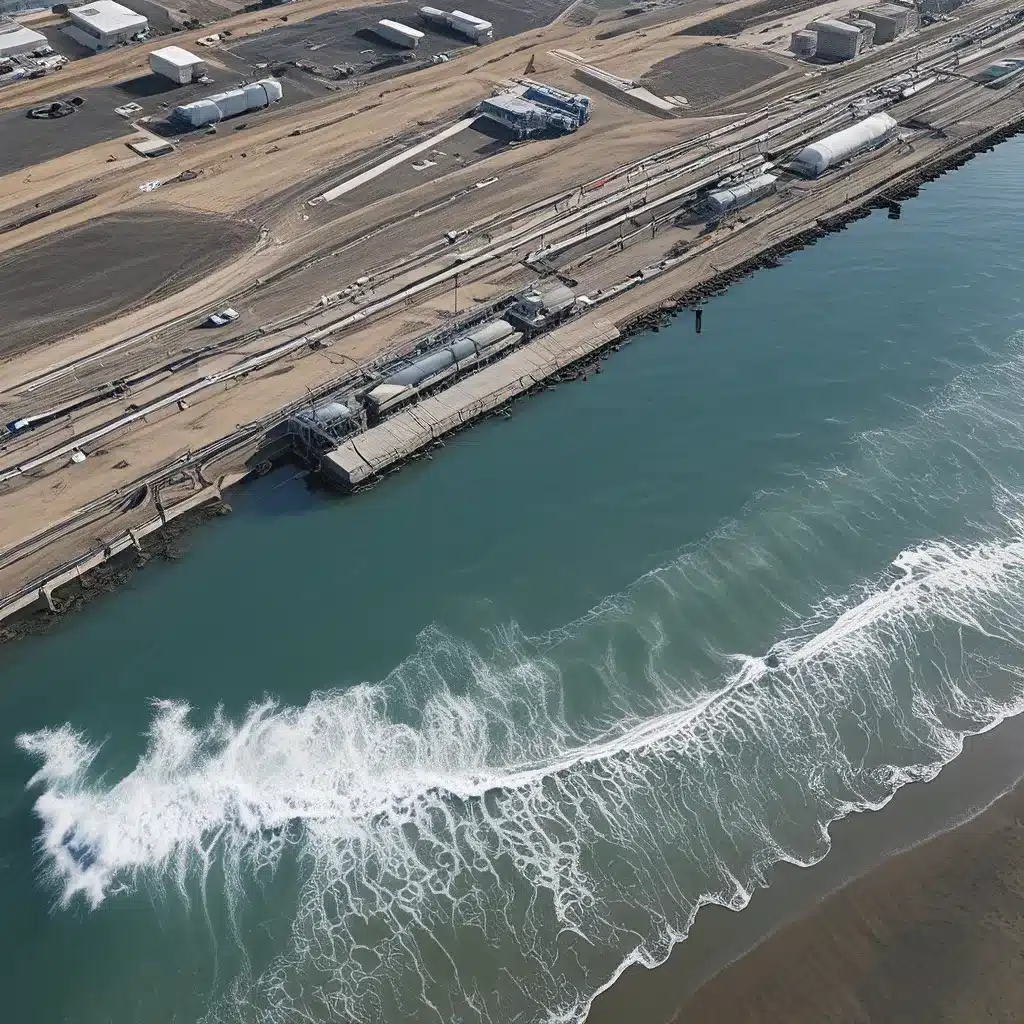
Riding the Wave of Innovation
Picture this: A future where clean, safe drinking water is accessible to all, even in the most remote corners of the world. Where wastewater is transformed into a valuable resource, powering our homes and businesses. Where cutting-edge technologies work tirelessly, day and night, to safeguard our most precious natural asset – water.
This vision may sound like something out of a sci-fi novel, but my friends, the future is now. As the founder and CEO of Inland Waters Inc., I’ve had a front-row seat to the remarkable advancements transforming the water treatment industry. And let me tell you, the waves of progress we’re riding are nothing short of exhilarating.
Harnessing the Power of Technology
In a world where water scarcity and pollution pose constant challenges, the strategic deployment of technology has become the key to unlocking unprecedented levels of efficiency and sustainability. Let’s dive into a few of the game-changing innovations that are making waves in the industry.
Intelligent Monitoring and Control Systems
Imagine a water treatment facility that can constantly monitor its own performance, adjusting parameters in real-time to ensure optimal efficiency. That’s precisely what intelligent monitoring and control systems are bringing to the table. These cutting-edge systems utilize a network of sensors, data analytics, and automated decision-making algorithms to continually optimize the treatment process.
Recent research has shown that these advanced control systems can reduce energy consumption by up to 20% and significantly improve water quality – all without the need for constant human intervention. It’s like having a team of highly skilled water treatment experts working around the clock, tailoring the process to the unique needs of your facility.
Membrane Technologies
When it comes to water purification, membrane technologies have emerged as a game-changer. These specialized filters can remove a wide range of contaminants, from microorganisms and heavy metals to dissolved salts and organic compounds. And the best part? They do it all while using a fraction of the energy and chemicals required by traditional treatment methods.
Research has shown that membrane-based systems can achieve up to 99% removal of certain pollutants, making them a crucial tool in the fight against water scarcity and environmental degradation. As these technologies continue to evolve, we’re witnessing a future where wastewater is no longer a liability, but a valuable resource ripe for reclamation and reuse.
Renewable Energy Integration
But the story of water treatment efficiency doesn’t end there. In a world facing the urgent challenge of climate change, the integration of renewable energy sources into water treatment facilities has become a top priority.
Imagine a water treatment plant powered entirely by solar panels or wind turbines – no more reliance on fossil fuels or the fluctuating costs of energy. The White House’s American Jobs Plan has recognized the importance of this shift, pledging to invest billions in modernizing the nation’s power infrastructure and helping achieve a carbon-free electricity grid by 2035.
As these renewable energy technologies become more accessible and affordable, we’re seeing a growing number of water treatment facilities embracing this paradigm shift. Not only does it reduce their carbon footprint, but it also insulates them from the volatility of energy markets, ensuring a reliable, cost-effective supply of power to keep the water flowing.
Tackling the Challenges
Of course, the journey towards enhanced water treatment efficiency isn’t without its challenges. As we harness the power of technology, we must also navigate complex regulatory landscapes, secure funding, and overcome the inertia of outdated infrastructure.
Regulatory Hurdles and Funding Gaps
Water treatment regulations can often feel like a maze, with a patchwork of local, state, and federal guidelines that can vary widely. Navigating this landscape and ensuring compliance can be a daunting task for water treatment providers, especially for smaller or resource-constrained facilities.
Additionally, the sheer cost of upgrading and maintaining water infrastructure can be a significant barrier. The American Society of Civil Engineers has estimated that the United States needs to invest over $1 trillion in the coming decades to address the country’s aging water systems. Securing the necessary funding from public and private sources is crucial to driving the adoption of innovative water treatment technologies.
Overcoming Inertia and Embracing Change
Another challenge lies in overcoming the inertia of traditional water treatment methods. Change, as they say, is never easy, and water treatment professionals can be wary of disrupting well-established practices. Convincing them to embrace new technologies and processes requires a delicate balance of education, training, and a shared vision for a more sustainable future.
A Future of Abundance and Resilience
But despite these hurdles, I remain deeply optimistic about the future of water treatment. The convergence of cutting-edge technologies, renewable energy, and a growing focus on sustainability has set the stage for a transformation that will echo through generations.
Imagine a world where every community, no matter how remote or underserved, has access to clean, reliable water. Where wastewater is not just a burden, but a valuable resource, powering our homes and businesses. Where water treatment facilities operate with unparalleled efficiency, adapting to the changing needs of their communities and the environment.
This is the future we’re building, one wave of progress at a time. And as the leader of Inland Waters Inc., I’m honored to be at the forefront of this transformative journey, working alongside dedicated water treatment professionals, policymakers, and innovators to make this vision a reality.
So, fasten your seatbelts, my friends, because the waves of progress are about to carry us into a new era of water treatment excellence. The future is bright, and it’s time to dive in.


